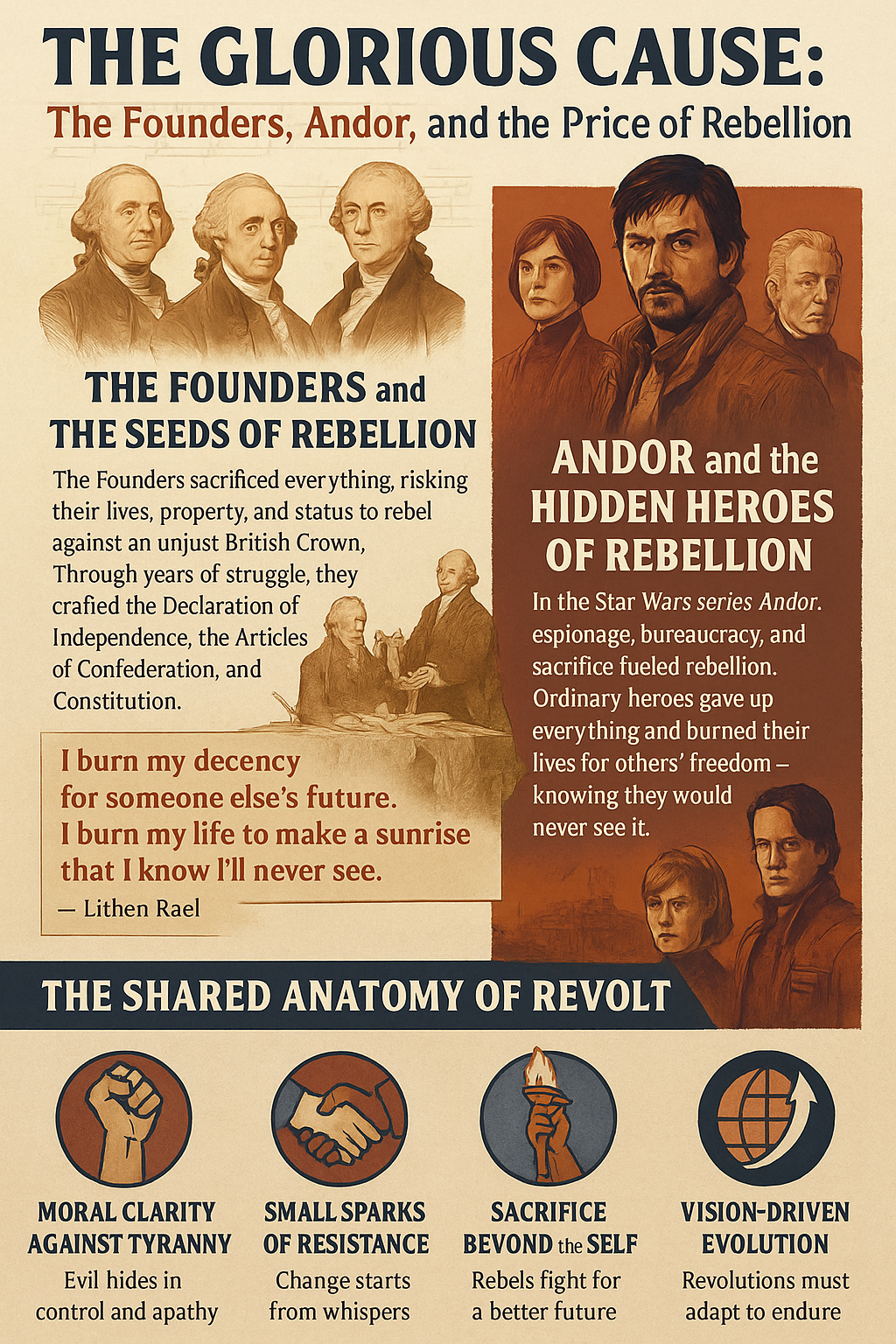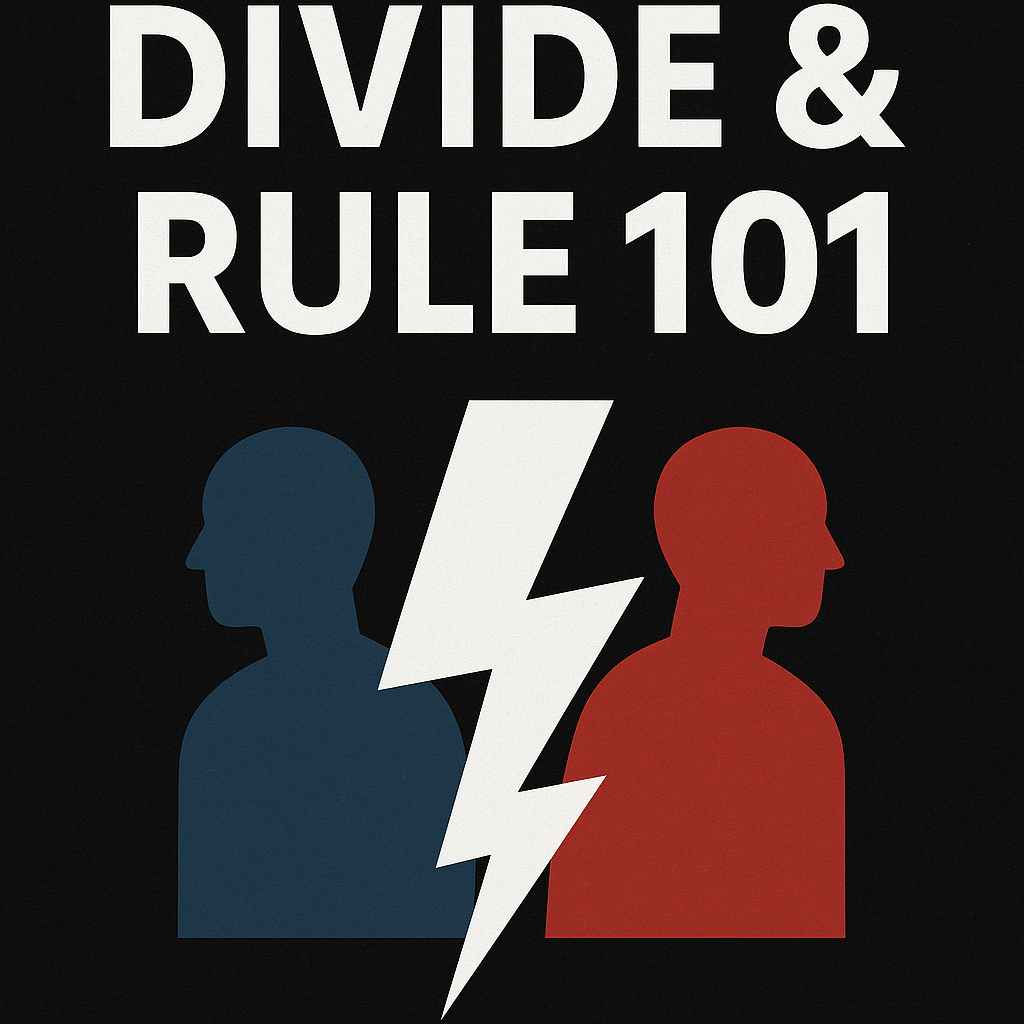Rebellions do not begin with fireworks. They begin in whispers, shadows, frustration, and moral urgency. They are born not from ease or abundance, but from a growing awareness that injustice, unchecked, becomes chains. Whether on the battlefields of 18th-century America or the dim corridors of the Empire in Andor, the essence of revolution is always the same: sacrifice, vision, and an unrelenting pursuit of freedom by those who may never live to see it.
I. The Founders and the Seeds of Rebellion
Long before the Declaration of Independence was signed, rebellion against the British Crown had been fermenting among the colonies. It wasn’t a single spark that lit the fire, but years of encroachments—taxation without representation, arbitrary governance, and the erosion of local autonomy.
Men like George Washington, John Adams, Benjamin Franklin, and Thomas Jefferson did not enter rebellion lightly. Most were wealthy, respected, and deeply aware that standing against the British Empire meant risking everything—property, status, family, life. But they shared a long view. Theirs was not a rebellion for personal gain but for a future shaped by liberty and justice. This is echoed in the words of John Adams:
“Posterity! You will never know how much it cost the present generation to preserve your freedom! I hope you will make good use of it.”
Their rebellion evolved not through a single declaration but through the painful birthing of governance. The Articles of Confederation came first—a noble but flawed attempt to balance independence and unity. It was a learning process, like any resistance. Eventually, the Constitution was born, with its separation of powers, checks and balances, and Bill of Rights. It was far from perfect, but it was a foundation: the beginning of a grand experiment.
II. Andor and the Hidden Heroes of Rebellion
The Star Wars series Andor takes this historical truth and translates it into a fictional—but painfully real—universe. Here, we see the mechanics of rebellion through the eyes of the forgotten: intelligence agents, smugglers, disgraced politicians, defecting bureaucrats, and citizens willing to live in fear for the hope of a freer galaxy.
Luthen Rael’s haunting monologue summarizes the essence of sacrificial rebellion:
“I burn my decency for someone else’s future. I burn my life to make a sunrise that I know I’ll never see.”
In Andor, we’re not shown glory. We’re shown bureaucracy, moral compromise, and personal destruction. People like Mon Mothma and Cassian Andor don’t just face stormtroopers—they face soul-wrenching choices, the daily cost of staying undercover, the heartbreak of betraying trust to build momentum.
This mirrors the Revolution’s unsung heroes: the farmers who fed the Continental Army, the pamphleteers who printed seditious ideas in the dark of night, and the diplomats who bartered quietly across foreign courts. These people weren’t always praised, and many weren’t remembered. But their fingerprints are on every stone of liberty laid thereafter.
III. The Shared Anatomy of Revolt
At their core, both the American Revolution and the Rebellion in Andor follow the same anatomy:
1. Moral Clarity Against Tyranny:
The recognition that evil hides behind bureaucracy and control—that injustice thrives not only through violence but through silence and apathy.
2. Small Sparks of Resistance:
Letters, clandestine meetings, whispered oaths, and unarmed protests. The Sons of Liberty and Saw Gerrera’s Partisans may have operated in different realms, but they both believed that radical change starts small.
3. Sacrifice Beyond the Self:
True rebels never fight for themselves. They fight for others—for children, for the voiceless, for a future they may never see. Thomas Paine wrote, “If there must be trouble, let it be in my day, that my child may have peace.”
4. Vision-Driven Evolution:
No revolution is perfect. Mistakes are made, and structures must evolve. The shift from the Articles of Confederation to the Constitution echoes the eventual unification of fragmented rebel cells in Star Wars into a coordinated alliance.
IV. Lessons for Today
These stories—real and imagined—remind us of the cost of freedom. Whether in 1776 or on Ferrix, true change is never cheap. It takes men and women willing to stand in the dark, to endure misunderstanding, persecution, and failure—all for the hope that something better can be born.
It calls us to ask hard questions:
- Are we willing to lose comfort to gain principle?
- Can we withstand the cost of integrity when the crowd prefers compliance?
- Will we live to be seen, or live to serve?
The founders did not start a rebellion with the expectation of comfort. Neither did Luthen, Mon Mothma, or Cassian Andor. Their choice was clarity over compromise, purpose over peace, meaning over safety.
And in that, they all remind us:
True revolutions are not measured by battles won, but by souls awakened.






